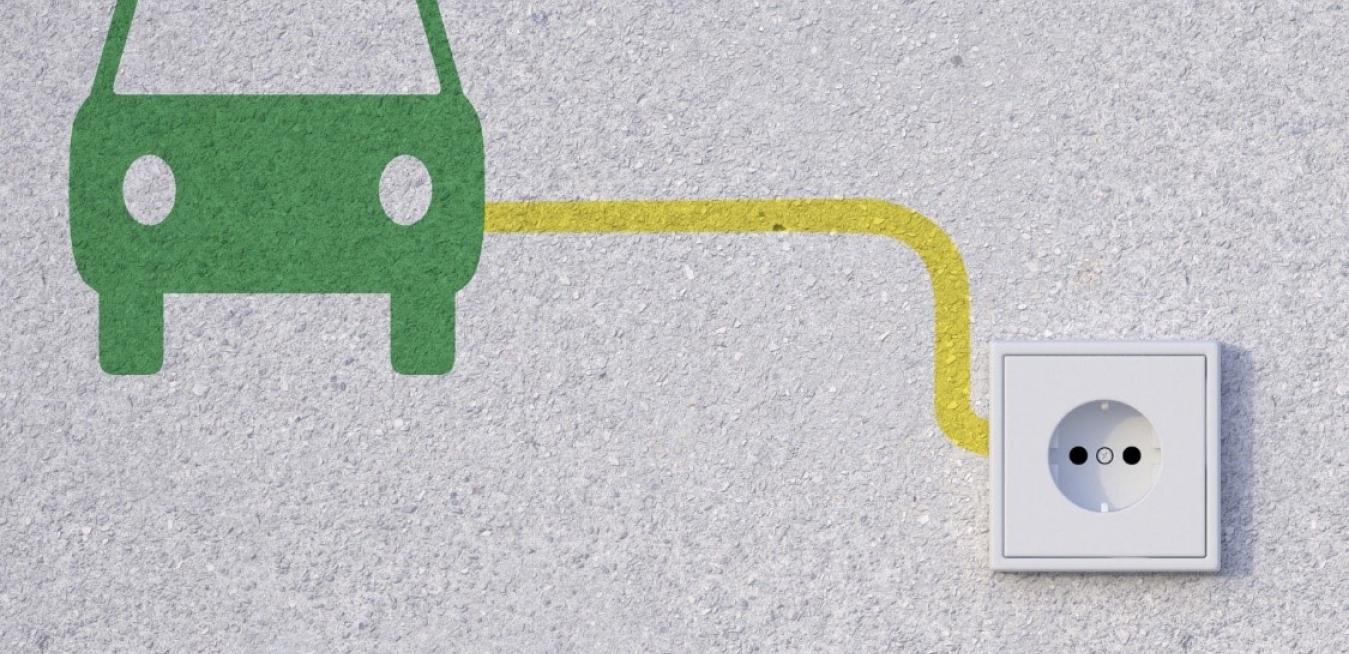Quick electric cars’ batteries recharge, “exponentially faster” quantum computers, Huge North Sea Station, an app for airport cleanliness as well as the planetary conjunction of Jupiter and Saturn are the 5 coolest things on Earth this month.
Electric Cars Get A Jump
In the electric-vehicle world, the race is on for batteries that can recharge quickly and last for long distances — and are also affordable and compact. Image credit: Getty Images.
What is it? Toyota introduced a solid-state car battery that could be “a game changer not just for electrical vehicles but for an entire industry,” according to Nikkei Asia.
Why does it matter? In the electric-vehicle world, the race is on for batteries that can recharge quickly and last for long distances — and are also affordable and compact. According to Nikkei, the electric vehicles now being developed by Toyota will have twice the range of vehicles traveling under similar conditions powered by Li-ion batteries, while not sacrificing interior space.
How does it work? Solid-state batteries use solid electrodes and a solid electrolyte, rather than the “aqueous electrolyte solutions” employed by Li-ion batteries. Toyota’s planned electric vehicle would be able to recharge in 10 minutes; the company it set to unveil a prototype next year.
Quantum Leap

Quantum computing is growing up. Image credit: Getty Images.
What is it? Chinese scientists built a quantum computer that can perform calculation “exponentially faster” than existing supercomputers — to the tune of nearly 100 trillion times faster.
Why does it matter? Companies around the world are hard at work trying to develop computers based on the principles of quantum mechanics — the branch of physics in which a system can exist in more than one state at the same time. (Recall the simultaneous heat engine and refrigerator.)
How does it work? The system developed by researchers at the University of Science and Technology of China in Shanghai is “an elaborate tabletop setup of lasers, mirrors, prisms, and photon detectors,” according to Scientific American; the scientists used it to demonstrate a standard simulation algorithm called Gaussian boson sampling, describing the technology further in a new paper in Science.
Star Of Wonder, Star Of Night

An image of the imminent planetary conjunction between Jupiter and Saturn taken on December 18th, 2020. Top and above images credit: Getty Images.
What is it? An extra bonus on this year’s winter solstice, and an early Christmas gift: The planets Jupiter and Saturn, which have been moving closer to one another in the night sky in recent months, will come together in a “great conjunction” on Dec. 21 and appear as one bright star.
Why does it matter? Of course, Jupiter and Saturn are hundreds of millions of miles apart, but from the perspective of Earth their paths cross with some regularity: They’re aligned in the sky about once every 20 years. But it’s been almost 400 years since they were quite this close, and almost 800 years since they aligned at night. “The date of the conjunction is determined by the positions of Jupiter, Saturn, and the Earth in their paths around the Sun, while the date of the solstice is determined by the tilt of Earth’s axis,” said NASA astronomer Henry Throop. “The solstice is the longest night of the year, so this rare coincidence will give people a great chance to go outside and see the solar system.”
How does it work? From your perspective, all you’ve got to do is step outside on Monday early evening or night — depending on where you live — and hope the weather is clear. NASA says the two planets will be visible toward the southwest just after sunset, and so close together that a pinkie finger held at arm’s length will cover them both. If you’ve got binoculars or a telescope, you may be able to see Jupiter’s four moons as well.
Huge North Sea Station Will Allow Germany To Capture More Wind Power

The DolWin3 is a 900-megawatt converter station the size of the Arc de Triomphe that’s capable of efficiently supplying 1 million German homes with wind power. Images credit: GE Renewable Energy.
Like many countries around the world, Germany is in the middle of an ambitious energy transition, aiming to generate 80% of its power from renewable sources by 2050. One steppingstone on that journey is a huge yellow structure rising more than 60 feet from the slate-gray waters of the North Sea some 80 kilometers off the country’s coast.
The structure, known as DolWin3, is a 900-megawatt converter station the size of the Arc de Triomphe that’s capable of supplying 1 million German homes with wind power. Built by GE Renewable Energy’s Grid Solutions unit, the $1.4 billion installation gathers electricity from surrounding offshore wind turbines and zips it through a cable to a sister station on Germany’s soil.
To do the job, DolWin3 uses advanced power conversion technology and software that changes the alternating current (AC) flowing in from the wind turbines into high-voltage direct current (HVDC). The current then flows through a 5-inch HVDC cable for 160 kilometers to a sister station located on Germany’s soil. There it is converted back into AC, connected to the electrical grid and sent to homes and businesses.
An App for Airport Cleanliness

The Wellness Trace pilot will run at the Albany airport for three months. With Wellness Trace, travelers can see for themselves how employees are working to carry out safety protocols.
At Albany International Airport in New York, a new app, called Wellness Trace, developed by GE and its partners unlocks valuable data stored in a quick-response (QR) code printed on their backs. This app can tell the flyers when the bathroom was last cleaned, say, or the check-in kiosk sanitized.
With Wellness Trace, however, travelers can see for themselves how employees are working to carry out safety protocols. At the Albany airport, where GE launched the system this week, those QR stickers are posted in more than 45 locations. Employees upload information into the app each time they clean a corresponding surface.
The Wellness Trace pilot will run at the Albany airport for three months. It is the first step in turning the airport into a “digital incubator” of sorts. That’s because GE Research, based in nearby Niskayuna, New York, will also work with the location on testing new artificial intelligence, machine learning and other digital technologies focusing on safety and transparency.





